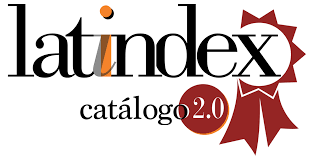As empresas de assessoria de imprensa face aos desafios da era digital: um estudo junto aos profissionais brasileiros / Press office companies and the challenges of the digital age
DOI:
https://doi.org/10.5783/revrrpp.v10i20.657Keywords:
Agências de RFelações Públicas, Empresas de assessoria de imprensa, Comunicação digital, Internet, Redes sociais, press relations agencies, digital communication, internet, social networks, communication managementAbstract
Resumo
As empresas de assessoria de imprensa têm um papel relevante na comunicação das organizações e, consequentemente, uma importância significativa na adoção das novas tendências da comunicação. O presente trabalho aborda o impacto que a internet tem tido nas empresas de assessoria de comunicação, pretendendo perceber até que ponto a evolução da internet e da comunicação online se tem repercutido no trabalho das empresas de assessoria de imprensa, compreender de que forma estas empresas estão aadaptar-se às mudanças provocadas pela internet, e finalmente, entender como estas mudanças têm consequências no tipo de perfil procurado pelas empresas de assessoria de imprensa. Foi utilizada uma abordagem qualitativa, com a realização de entrevistas individuais junto de três perfis de participantes: agências de assessoria de imprensa, empresas clientes daquelas agências e especialistas da área da comunicação, procurando obter uma perspectiva complementar e compreensiva deste fenómeno. O estudo revelou que se verifica nestas empresas uma mudança de velhos paradigmas e a adoção de novas ferramentas, uma efetiva adequação da comunicação aos novos medias digitais com uma migração para o online. Os profissionais têm noção da necessidade de adaptação à nova realidade, enveredando pela inovação e reestruturação das práticas e nas próprias empresas de assessoria de imprensa. Neste desenvolvimento de novas competências é inevitável que os profissionais de comunicação tenham uma formação sólida para a qual as universidades têm um papel essencial.
Palavras chave: empresas de assessoria de imprensa, comunicação digital, , internet, redes sociais,gestão de comunicação
Abstract
The increase in the use of the internet and its tools contributed to the development of communication in organizations, leading Public Relations companies in general, and those dedicated to press relations in particular, to follow this process. The present work addresses this theme focusing its attention on the impact that the internet and digital communication had on Public Relation companies. In particular, this study aims to: understand the impact of the evolution of the internet on the work and functioning of press relations companies; understand how press relations companies are adapting to the changes caused by the internet; understand how these changes have consequences on the type of professional profile sought by press relations companies.
A qualitative approach was used, with the administration of a questionnaire with open questions. The sample as composed of three profiles of professionals involved in this phenomenon: professionals from press relations agencies, professionals from companies that are clients of those agencies and a third group formed by specialists in the area of communication. Thus, it was intended to obtain a complementary and comprehensive perspective of this phenomenon.
The questionnaire was sent by e-mail making it possible to interview individuals who were in different regions without involving the movement of researchers.
As main conclusions it was verified that a considerable part of the participants considered that the development of the online communication brought about a change of old paradigms in which old tools are gradually being abandoned, giving way to new ways of doing. In general, there is an increase in the use of digital channels, implying the adoption of new tools and knowledge. This market reality confirms the perspective found in the literature, in which it is argued that the growth of online communication has led to an evolution in the Public Relations sector, leading professionals to adapt to this new reality by incorporating digital into their practices.
The digital age has made possible new forms of segmentation and communication through interaction on social networks, allowing to communicate with audiences in a more targeted and fast way. This evolution fits into the concept of PR 2.0 present in the literature showing a new way of applying PR to communication between companies and audiences. In contrast to the one-way transmission of information that was typical of the mass media, social networks allow two-way and interactive communication. The communication advisory companies must then adapt the communication to the new digital channels, gradually completing a migration to online.
As a reaction to these changes, professionals are aware of the need to adapt to the new reality. In this context, most respondents recognized, in many cases, effective implementation of digital communication. This data is in line with other studies carried out with PR professionals who believe that technological innovations will be a significant factor of change in the sector.
In this development of new skills and the acquisition of multidisciplinary knowledge, communication professionals inevitably should have a solid education. To this end, universities have an essential role in teaching Public Relations by training professionals who are up-to-date and prepared for market developments.
Keywords: press relations agencies, digital communication, internet, social networks, communication management.
Downloads
References
ABRACOM (2020). ABRACOM HOME PAGE. Recuperado em 18 de Maio de 2020 de https://www.abracom.org.br/.
ACHILOV, N. (2016). Advertising and Public Relations: Challenges and Implications. Journal of Mass Communication and Journalism, S2 (001), 1-4. http://dx.doi.org/10.4172/2165-7912.S2-001.
CARDOSO, P. R.; VERÍSSIMO, J. D.; CORREIA, M. R. (2019). O ensino do marketing e da comunicação face aos desafios do digital: a perspetiva de professores e profissionais. XV Congreso Internacional Galego-Portugués de Psicopedagoxía, Universidade da Coruña, 4, 5 e 6 de setembro de 2019.
CHAMUSCA, M. & CARVALHAL, M. (2011). Comunicação e Marketing digitais: conceitos, práticas, métricas e inovações. Salvador, BA: Edições VNI.
DREYER, B. M. (2015). Estratégias de relações públicas para organizações em tempos de mídias sociais digitais. Organicom, 12(22), 130 – 144. Recuperado em 18 de Maio de 2020 de http://www.revistas.usp.br/organicom/article/view/139273/134614.
EYRICH, N.; PADMAN, M. L. & SWEETSER, K. D. (2008). PR practitioners’ use of social media tools and communication technology. Public Relations Review, 34, 412–414. http://dx.doi.org/10.1016/j.pubrev.2008.09.010.
HILL, L. N. & WHITE, C. L. (2000). Public Relations Practitioners' Perception of the World Wide Web as a Communications Tool. Public Relations Review, 26(1), 31-51. DOI:10.1016/S0363-8111(00)00029-1
HORN, I. S.; TAROS, T.; DIRKES, S.; HÜER, L.; ROSE, M.; TIETMEYER, R. & CONSTANTINIDES, E. (2015). Business reputation and social media: A primer on threats and responses. Data and Digital Marketing Practice, 16(3), 193-208. http://dx.doi.org/10.1057/dddmp.2015.1.
IFIGENEIA, M. & DIMITRIOS, A. (2018). Globalization, Social Media and Public Relations: A Necessary Relationship for the Future? Conference: The economies of Balkan and Eastern Europe countries (EBEEC2017), Piraeus-Athens, Greece, 1–14.
KHARVI,Vikram e BHUSHAN, Uma (2017). An Exploratory Study on Usage of Social Media by PR Practitioners for Media Relations. IOSR Journal Of Humanities And Social Science (IOSR-JHSS), 22(8), 35-47. http://dx.doi.org/10.9790/0837-2208053547.
KOTLER, P.; KARTAJAYA, H.; SETIAWAN, I. (2017). Marketing 4.0: do tradicional ao digital. 1º edição. Rio de Janeiro (Brasil): Sextante.
KUMAR, V. & GUPTA, Shaphali (2016) Conceptualizing the Evolution and Future of Advertising, Journal of Advertising, 45(3), 302-317. http://dx.doi.org/10.1080/00913367.2016.1199335.
KUNSCH, M. M. K. (2009). Comunicação Organizacional: linguagem, gestão e perspectivas. 2º edição. São Paulo (Brasil): Saraiva.
MOTA, I. P.; SOUZA, R. A.; BARRETO, I. G.; LORDÊLO, T. S. & CALADO, K. A. (2011). Assessoria de imprensa: cenário de negócios e convergência tecnológica. Temática, 7(5), 1-11.
PERLADO, M. & RUBIO-ROMERO, J. (2015). Competencias, habilidades y formación del creativo publicitario en la era digital. Creatividad y Sociedad, 23 (junio), 6-34.
RIBEIRO, V.; CAMPELO, F.; RODRIGUES, I.; MARMELO, M. & ROCHA, M. (2015). A assessoria de imprensa e as redes sociais: Estudo de caso sobre as mudanças no relacionamento fonte-jornalista e o processo de produção do press release, Comunicação Pública, 10(19). Recuperado em 18 de Maio de 2020 de http://journals.openedition.org/cp/1077.
SAKALI, E. (2017). Examining the use of social media in public relations practice in the kenyan government: a case of immigration department. MA Thesis, University of Nairobi (Kenia).
SOUZA, L. O.; SANT’ANA, V. A. & ANDRES, F. S. (2018). Relações Públicas Digital: uma Análise dos Egressos de Relações Públicas da Unipampa - campus São Borja. XIX Congresso de Ciências da Comunicação na Região Sul, Cascavel - PR, 31 de maio a 2 de Junho de 2018.
TANKOSIC, M.; IVETIC, P. & VUCUREVIC, V. (2016). Features of Interactive Public Relations: Using Web 2.0 to Establish a Two-Way Communication with the Consumers. International Journal of Economics and Management Systems, 1, 290-295.
USC ANNENBERG CENTER FOR PUBLIC RELATIONS (2019). PR:Tech - The future of technology in communication, 2019 Global Communications Report. Recuperado em 18 de Maio de 2020 de http://assets.uscannenberg.org/docs/2019-global-communications-report.pdf.
WATSON, T. (2012). The evolution of public relations measurement and evaluation. Public Relations Review, 38(3), 390–398. http://dx.doi.org/10.1016/j.pubrev.2011.12.018.
WILSON, D. & SUPA, D. W. (2013). Examining Modern Media Relations: An Exploratory Study of the Effect of Twitter on the Public Relations – Journalist Relationship. Public Relations Journal, 7(3), 1-20.
WRIGHT, D. K. & HINSON, M. D. (2009). An Updated Look at the Impact of Social Media on Public Relations Practice. Public Relations Journal, 3(2), 1-27.
Downloads
Published
How to Cite
Issue
Section
License
Authors publishing in this journal agree to the following terms:
a. Authors retain copyright and grant the journal the right to be the first publication of the work as licensed under a Creative Commons Attribution License that allows others to share the work with an acknowledgement of authorship of the work and initial publication in this journal.
b. Authors may separately enter into additional arrangements for non-exclusive distribution of the version of the work published in the journal (e.g., placing it in an institutional repository or publishing it in a book), with an acknowledgement of initial publication in this journal.
c. Authors are allowed and encouraged to disseminate their work electronically (e.g. in institutional repositories or on their own website) before and during the submission process, as it can lead to productive exchanges, as well as earlier and higher citation of published work (see The Effect of Open Access).




